|
For a long time, I've been 3D printer-adjacent; I've been fortunate to work alongside instructional technology and STEAM personnel on campuses, so I knew what 3D printers could do and encouraged students to use 3D printing as independent project formats, but I hadn't managed the machines or designs myself. I started at a new campus this year, and I knew I didn't want the brand new 3D printer to be sitting in a closet, so I went to some hands-on training, built a lesson, and jumped in with both feet. I hope this post can offer some tips and learning to others out there in similar situations! The Lesson I worked with 15 different 8th grade ELA classes in the library - about half were advanced, and half were "on level." There were about 20 - 30 students per class, and I have nine tables with 4 chairs each in the teaching/presentation area of my library. I started with a read-aloud that was only loosely connected to monsters (I'll take any excuse to share a fun picture book): Alex Willan's Unicorns Are the Worst. The text talks about some characteristics of unicorns, as well as goblins and dragons, so we would be focusing on designing our own original monsters. I'm new to my campus this year, so not all my 8th graders have buy-in. While some clearly enjoyed the book, with other classes the read-aloud definitely felt like a stand-up comic routine in an empty room. I remained undeterred - I know they were enjoying it on the inside! I prepared index cards with different traits on them - I took time to create unique traits for every table in every class, although there were plenty of synonyms (anxious, worried; joyful, jubilant). I chose more straightforward adjectives for the on-level classes - things like fearful or popular or vain - and more abstract ideas for the advanced classes, including charismatic, analytical, and obnoxious. I gave one card to each table, and since I prepped nine cards per class and all classes have fewer than 36 students, there were always extras - so I held up two cards and each table had some choice about which word they would focus on. Just as the book described some traits of unicorns and goblins, I invited them to consider what facial expressions, body language, and props might be associated with each trait - they took about two minutes to consider and discuss this. The read-aloud, card passing, and trait brainstorming took about 12 - 15 minutes of class time. Next, we proceeded to the design phase - our campus has access to 1:1 devices and the TinkerCad program, so students accessed that through a class I'd set up for them within the software. Designing If you have done 3D printing before, you will know that setting them loose to design monsters matching traits is fraught with issues - but I didn't know any of those issues yet. I only knew to caution them to keep the design on the build plate within the box constraints, to scale the final size down so the print wouldn't take too long, and to focus on shape rather than color, since we would only be printing in single colors. I also did not give them filament color options, and I was really glad I didn't even try to accommodate that later on. I actually bought different colored thumb drives, intending to collect different designs and saving all the red prints to the red drive, and the yellow prints to the yellow drive, but I ended up just printing everything in one color until I ran out and changed the filament. It was much simpler! Some of the 3D Print Designed Monsters in Progress: Students had about 10 minutes to work on individual designs using TinkerCad, which I didn't have any real expertise in using. There are some useful things to know about how to view or scale the design, or how to import existing shapes and figures, but they are reasonably intuitive and students were able to figure out how to create designs they envisioned, even if they needed help from me or someone else at their table. They were highly engaged in this process - every student, in every class. I did have students who had experience with 3D printing and designing at home or in STEM classes, and some of them preferred to work with different software they could access - that was fine as long as the end product was an STL file. After some individual design work time, I invited them to stand up and do a gallery walk of the designs so far, with the index card trait clearly visible on the table and the computers propped open to show the designs in progress. This was helpful - students talked together to try to make different design features work, and they were happy to get back to improving their designs after a short tour. I had planned for students to compare the designs at each table and choose one design per table (and per trait) to move forward and develop together, but after I tried this with a class, the focus of most of the non-designers fell apart - they didn't keep discussing and collaborating and building the best parts of each monster. So for the remaining classes, I opted to invite them all to keep revising and improving their individual designs (this meant I had multiple file variations on the same trait for some traits). They only had another 5-8 minutes for this stage. When it was time to save the design, I had them name the monsters by the trait on the index card - so, for example, the file was Energetic.STL or Friendly.STL, and this was very helpful later when I printed them. Each student downloaded the monster file to the computer, and then shared it with me via Google Classroom assignment. This was imperfect on my end later, but quick for them during the lesson. I made no promises about deadlines or distribution - I just said they could look forward to seeing their designs printed in a monster gallery in our front display case this spring. That was also very helpful - if I had to print them all for a grade or for an event, it would have been incredibly stressful and much less fun. At this point, their lesson ended, and my learning about the printing process started.
|
Jamie Wright
I've had the privilege of working with hundreds of students and families in IA, CT, NC, MO, TX, and Canada. I love being a teacher-librarian! Categories
All
Archives
May 2024
|
- Home
-
Book Recommendations
-
Alphabetical List of Book Recommendations
>
- Abby Spencer Goes to Bollywood
- Absolutely Almost
- The Absolutely True Diary of a Part-Time Indian
- After Ever After
- After Iris
- Airborn >
- Alex Rider - series
- All Fall Down
- All the Answers
- All the Broken Pieces
- All You Knead is Love
- Allegedly
- All's Faire in Middle School
- Amal Unbound
- Amazing Grace
- American Born Chinese
- Amina's Voice
- Among the Hidden - series
- Anger is a Gift
- Anne of Green Gables - series >
- Artemis Fowl - series
- Athlete vs. Mathlete
- Awkward
- The Bad Apple - Merits of Mischief
- Bad Princess: True Tales from Behind the Tiara
- Bamboo People
- Ban This Book
- Because of Mr. Terupt
- Bernice Buttman, Model Citizen
- Bionic
- The Black Pearl
- Blended
- Blue Jasmine
- Bomb: The Race to Make - and Steal - the World's Most Dangerous Weapon
- The Book of a Thousand Days
- Booked
- A Boy Called Bat
- Boys Without Names
- The Breadwinner Trilogy
- Breaking Stalin's Nose
- Bright
- Brown Girl Dreaming
- Bud, Not Buddy
- Bump
- The Cardturner
- Carry On
- Caterpillar Summer
- Catherine, Called Birdy >
- Charlie and the Chocolate Factory
- Chasing Secrets
- Chasing Vermeer
- Checked
- Chronicles of Prydain
- Chu Ju's House
- Circa Now
- Click
- Climbing the Stairs
- Code Name Verity - Series
- Code Talker
- Colin Fischer
- Come November
- Confetti Girl
- Count Me In
- Counting By 7s
- Courage for Beginners
- The Courage Test
- Crenshaw
- Criss Cross
- A Crooked Kind of Perfect
- Curveball: The Year I Lost My Grip
- Dangerous
- Dead End in Norvelt
- Dealing with Dragons
- Dear Mr. Henshaw
- A Diamond in the Desert
- The Dirt Diary - Series
- Divergent - Series
- Does My Head Look Big in This?
- Dog Man
- Dog Whisperer - Series
- Drive Me Crazy
- A Drop of Hope
- Drums, Girls, and Dangerous Pie
- Echo
- El Deafo
- Eleanor & Park
- Elephant Secret
- Eleven Birthdays
- Elijah of Buxton
- Ella Enchanted
- Ellen Outside the Lines
- Emma-Jean Lazarus Fell Out of a Tree
- Ender's Game
- Enna Burning
- Enola Holmes
- Eragon
- Escape from Mr. Lemoncello's Library
- Escape Under the Forever Sky
- Esperanza Rising >
- Eventown
- Ever
- Ever After High
- Every Shiny Thing
- Everything on a Waffle
- Fairest
- Falling Over Sideways
- The False Prince Series
- Fake Mustache
- Family Game Night and Other Catastrophes
- Famous Phonies
- Feathers
- Fever, 1793
- The Fifth Wave
- Fifty-Four Things Wrong with Gwendolyn Rogers
- The 57 Bus
- Finding Perfect
- The Fingertips of Duncan Dorfman
- The Fire, The Water, and Maudie McGinn
- The First Rule of Punk
- Fish in a Tree
- Flora and Ulysses
- Flygirl by Sherri Smith
- Focused
- Forget Me Not
- The Fourteenth Goldfish
- Framed!
- Frankie Sparks - Series
- Free Thaddeus!
- From the Mixed-up Files of Mrs. Basil E. Frankweiler >
- Front Desk
- Full Cicada Moon
- The Garden of My Imaan
- Garvey's Choice
- Geek Girl - Series
- The Genius Files >
- Ghost
- A Gift of Magic
- The Girl in the Well is Me
- Girl, Stolen
- The Girl Who Could Fly
- The Girl Who Drank the Moon
- The Girl Who Threw Butterflies
- The Giver
- Go Big or Go Home
- Gold Medal Summer
- Golden Girl
- The Goldfish Boy
- Good Dog
- A Good Kind of Trouble
- The Goose Girl
- Gracefully Grayson
- Grandmaster
- The Graveyard Book
- Greetings from Witness Protection
- Hachiko Waits
- The Handbook for Dragon Slayers
- A Handful of Stars
- Half a World Away
- Hamster Princess - Series
- Harry Potter - Series
- Hatchet
- Her Own Two Feet
- Hero
- The Heroes of Olympus Series
- Hey, Kiddo
- The Higher Power of Lucky
- Holes >
- Home of the Brave
- The Homework Machine
- The Homework Strike
- The Honest Truth
- Hope Was Here
- The House That Lou Built
- How to Ditch Your Fairy
- How to Steal a Dog
- How to Train Your Dragon Series
- The Hundred Dresses
- The Hunger Games Series
- I Am a Genius of Unspeakable Evil and I Want to Be Your Class President
- I Am Not Your Perfect Mexican Daughter
- I Have a Bad Feeling About This
- I Am Number Four
- I Heart Band
- I Kill the Mockingbird
- I Survived . . . Series
- I Will Always Write Back
- Ida B
- If I Were You
- If a Tree Falls at Lunch Period
- In the Shadow of the Sun
- Incommunicado
- Inside Out and Back Again
- Insignificant Events in the Life of a Cactus
- The Invention of Hugo Cabret
- Invisible World
- It's Raining Cupcakes
- James and the Giant Peach
- Jefferson's Sons
- Karma Khullar's Mustache
- Keeping Corner
- The Kidney Hypothetical
- The Kite Fighters >
- Knock Out
- Lasagna Means I Love You
- The Last Book in the Universe
- The Last Shot: Mystery at the Final Four
- Left Out
- Legend
- The Lemonade War
- Liberty Porter, First Daughter
- Lies We Tell Ourselves
- Lights, Camera, Disaster
- Lily and Dunkin
- The Limit
- The Lions of Little Rock
- Listen, Slowly
- Listening for Lions
- Little House - Series
- Little Miss Evil
- A Little Princess
- Locomotion >
- The Long Ride
- A Long Walk to Water
- Long Way Down
- Losers Take All
- The Lost Girl
- Lost in the Sun
- Love That Dog
- Lunch Money
- The Magician's Elephant
- Maniac Magee
- Mascot
- Masterpiece >
- A Match Made in Mehendi
- Matched Trilogy
- Maus
- Maybe a Fox
- Maybe He Just Likes You
- The Maze Runner
- Me and Marvin Gardens
- Medusa Jones
- A Million Shades of Gray
- Minnie McClary Speaks Her Mind
- The Miraculous Journey of Edward Tulane
- The Miscalculations of Lightning Girl
- Mockingbird
- Morning Girl
- Morning Star
- Mrs. Frisby and the Rats of NIMH >
- My Basmati Bat Mitzvah
- My Life in Pink and Green
- My Life with the Liars
- The Mysterious Benedict Society
- Nathan Hale's Hazardous Tales
- Neil Flambe
- The Neptune Project
- Nerd Camp
- NERDS
- New Kid
- The Next Great Paulie Fink
- The Night Diary
- A Night Divided
- Ninth Ward
- No Summit Out of Sight
- No Talking
- Not If I Can Help It
- Notes from an Accidental Band Geek
- Nothing But the Truth
- Number the Stars >
- OCDaniel
- Olive's Ocean
- On My Honor >
- On the Wings of Heroes
- The One and Only Ivan
- One Came Home
- One Crazy Summer
- One Half from the East
- One Jar of Magic
- One of the Survivors
- One of Us is Lying
- One Small Step
- One True Way
- Orbiting Jupiter
- The Other Half of My Heart
- The Other Side of Truth
- Out of My Mind
- Out of the Dust
- Outrun the Moon
- Paint the Wind >
- The Paper Cowboy
- Paperboy
- Peak
- Percy Jackson and the Olympians
- The Phantom Tollbooth
- Piecing Me Together
- Pippi Longstocking
- Planet Earth is Blue
- The Player King
- The Porcupine of Truth
- Posted
- The President's Daughter (series)
- Princess Academy
- The Princess in Black
- The Pros of Cons
- The Puttermans Are in the House
- The Puzzling World of Winston Breen
- Rachel Spinelli Punched Me in the Face
- Rancho Rosetta Series
- Real Friends
- Rebel McKenzie
- The Red Pencil
- Red Thread Sisters
- Red, White, and Whole
- Reluctant Journal of Henry K. Larsen
- The Report Card
- Rescued
- Restart
- Revolution is Not a Dinner Party
- River Secrets
- Roll With It
- Roller Girl
- Romeo Blue
- Roses and Radicals
- Ruby on the Outside
- Rules
- Rules for Stealing Stars
- The Running Dream
- Sadako and the Thousand Paper Cranes
- Sahara Special
- Salt and Sugar
- Salt to the Sea
- Same Sun Here
- Samurai Rising
- Sarah, Plain and Tall
- Sarai and The Meaning of Awesome
- Saraswati's Way
- Sassy - series
- Save Me a Seat
- School of Fear
- The School for Good and Evil
- Schooled
- The Schwa Was Here
- A Season of Daring Greatly
- The Secret Diary of Lydia Bennet
- Secret Keeper
- The Secret School
- The Seventh Wish
- Shakespeare's Secret
- Shooting Kabul
- Sideways Stories from Wayside School
- The Sign of the Beaver
- Simon Sort of Says
- Sing Down the Moon
- A Single Shard >
- The Sisters Grimm
- Six Impossible Things
- Slider
- Sliding Into Home
- Smile
- The Smile
- A Snicker of Magic
- Soar
- Some Places More Than Others
- Something Rotten: A Fresh Look at Roadkill
- Song for a Whale
- Space Case
- Sparrow
- Speak
- Speechless
- Spin the Golden Light Bulb
- Stargazing
- Stargirl >
- Star Wars: Jedi Academy
- Stef Soto, Taco Queen
- Stink and the Incredible, Super Galactic Jawbreaker
- Stone Fox
- Story Thieves
- The Strange Case of Origami Yoda
- Stuck on Earth
- The Summer I Saved the World in 65 Days
- Surviving the Applewhites
- Survival Strategies of the Almost Brave
- The Swap
- The Sweetest Sound
- The Tail of Emily Windsnap >
- Take Me to the River
- The Tale of Despereaux
- A Tangle of Knots
- The Tapper Twins - series
- Tasting the Sky
- That Thing About Bollywood
- TBH This is So Awkward
- The Thief
- The Thing About Jellyfish
- Things Not Seen
- 33 Minutes
- Thirst
- This Journal Belongs to Ratchet
- This Side of Home
- Threads
- The Tiger Rising >
- A Time to Dance
- The Total Tragedy of a Girl Named Hamlet
- The Trials of Apollo (series)
- The True Meaning of Smekday
- Tumbling
- Turning 15 on the Road to Freedom
- The Two Princesses of Bamarre
- Uglies
- Ultra
- Unbound
- Under a Painted Sky
- The Underneath
- Under the Egg
- Ungifted
- Unidentified Suburban Object
- The Unlikely Hero of Room 13B
- The Unwanteds
- Uprising
- Upside Down Magic
- The View from Saturday
- The Vigilante Poets of Selwyn Academy
- Vincent Shadow, Toy Inventor
- Waiting for Normal
- Wake Up Missing
- The War That Saved My Life
- We Are All Made of Molecules
- We Are Okay
- We Are Party People
- Wedgie & Gizmo
- The Wednesday Wars
- The Westing Game
- When You Trap a Tiger
- Where the Mountain Meets the Moon
- Where the Red Fern Grows
- A Whole Nother Story
- Wishtree
- The Witch of Blackbird Pond >
- Woods Runner
- Woof
- Wonder
- Words on Fire
- The World Ends in April
- A Wrinkle in Time
- A Year in the Life of a Total and Complete Genius
- You Bring the Distant Near
- Young Fu of the Upper Yangtze
- Zebra Forest
- Zen and the Art of Faking It
- Zoey and Sassafras
-
Book Topics - Categories
>
- Book Topics - Animals
- Book Topics - The Arts
- Book Topics - Careers
- Book Topics - Competitions
- Book Topics - Families
- Book Topics - Health
- Book Topics - Historical Events
- Book Topics - Journeys
- Book Topics - Legends, Myths, and Fairy Tales
- Book Topics - The Outdoors
- Book Topics - School
- Book Topics - Society, Community
- Book Topics - Sports
- Book Topics - Unexplained Phenomena
-
Book List by Theme
>
- Book Themes - Self
- Book Themes - Families
- Book Themes - Education
- Book Themes - Nature and the Environment
- Book Themes - Social Interactions
- Book Themes - Society
- Book Themes - Prejudice
- Book Themes - Overcoming Obstacles
- Book Themes - Integrity
- Book Themes - Miscellaneous
- Book Themes - Values and Conflicts
- Book List by Format
- Book List by Author
- Book List by Setting
- Book List by Genre >
- Book List by Grade Level >
- Middle School Book Talk Videos
- Book Series Lists >
- Award - Winning Books >
- Book Quizzes
- Book Buying Guide Lists
- Eight Great Books Lists >
- IB-PYP Book Lists
- Picture Books for Lessons >
-
Alphabetical List of Book Recommendations
>
-
Enrichment
- Enrichment Ideas
-
Chez Moi Math Problem Solving
>
- Week 1 Chez Moi Math Problem Solving
- Week 2 Chez Moi Math Problem Solving
- Week 3 Chez Moi Math Problem Solving
- Week 4 Chez Moi Math Problem Solving
- Week 5 Chez Moi Math Problem Solving
- Week 6 Chez Moi Math Problem Solving
- Week 7 Chez Moi Math Problem Solving
- Week 8 Chez Moi Math Problem Solving
- Week 9 Chez Moi Math Problem Solving
- About
- Blog
© 2017 - 2024 - Ideas for Learners by Jamie Wright
|
- Home
-
Book Recommendations
-
Alphabetical List of Book Recommendations
>
- Abby Spencer Goes to Bollywood
- Absolutely Almost
- The Absolutely True Diary of a Part-Time Indian
- After Ever After
- After Iris
- Airborn >
- Alex Rider - series
- All Fall Down
- All the Answers
- All the Broken Pieces
- All You Knead is Love
- Allegedly
- All's Faire in Middle School
- Amal Unbound
- Amazing Grace
- American Born Chinese
- Amina's Voice
- Among the Hidden - series
- Anger is a Gift
- Anne of Green Gables - series >
- Artemis Fowl - series
- Athlete vs. Mathlete
- Awkward
- The Bad Apple - Merits of Mischief
- Bad Princess: True Tales from Behind the Tiara
- Bamboo People
- Ban This Book
- Because of Mr. Terupt
- Bernice Buttman, Model Citizen
- Bionic
- The Black Pearl
- Blended
- Blue Jasmine
- Bomb: The Race to Make - and Steal - the World's Most Dangerous Weapon
- The Book of a Thousand Days
- Booked
- A Boy Called Bat
- Boys Without Names
- The Breadwinner Trilogy
- Breaking Stalin's Nose
- Bright
- Brown Girl Dreaming
- Bud, Not Buddy
- Bump
- The Cardturner
- Carry On
- Caterpillar Summer
- Catherine, Called Birdy >
- Charlie and the Chocolate Factory
- Chasing Secrets
- Chasing Vermeer
- Checked
- Chronicles of Prydain
- Chu Ju's House
- Circa Now
- Click
- Climbing the Stairs
- Code Name Verity - Series
- Code Talker
- Colin Fischer
- Come November
- Confetti Girl
- Count Me In
- Counting By 7s
- Courage for Beginners
- The Courage Test
- Crenshaw
- Criss Cross
- A Crooked Kind of Perfect
- Curveball: The Year I Lost My Grip
- Dangerous
- Dead End in Norvelt
- Dealing with Dragons
- Dear Mr. Henshaw
- A Diamond in the Desert
- The Dirt Diary - Series
- Divergent - Series
- Does My Head Look Big in This?
- Dog Man
- Dog Whisperer - Series
- Drive Me Crazy
- A Drop of Hope
- Drums, Girls, and Dangerous Pie
- Echo
- El Deafo
- Eleanor & Park
- Elephant Secret
- Eleven Birthdays
- Elijah of Buxton
- Ella Enchanted
- Ellen Outside the Lines
- Emma-Jean Lazarus Fell Out of a Tree
- Ender's Game
- Enna Burning
- Enola Holmes
- Eragon
- Escape from Mr. Lemoncello's Library
- Escape Under the Forever Sky
- Esperanza Rising >
- Eventown
- Ever
- Ever After High
- Every Shiny Thing
- Everything on a Waffle
- Fairest
- Falling Over Sideways
- The False Prince Series
- Fake Mustache
- Family Game Night and Other Catastrophes
- Famous Phonies
- Feathers
- Fever, 1793
- The Fifth Wave
- Fifty-Four Things Wrong with Gwendolyn Rogers
- The 57 Bus
- Finding Perfect
- The Fingertips of Duncan Dorfman
- The Fire, The Water, and Maudie McGinn
- The First Rule of Punk
- Fish in a Tree
- Flora and Ulysses
- Flygirl by Sherri Smith
- Focused
- Forget Me Not
- The Fourteenth Goldfish
- Framed!
- Frankie Sparks - Series
- Free Thaddeus!
- From the Mixed-up Files of Mrs. Basil E. Frankweiler >
- Front Desk
- Full Cicada Moon
- The Garden of My Imaan
- Garvey's Choice
- Geek Girl - Series
- The Genius Files >
- Ghost
- A Gift of Magic
- The Girl in the Well is Me
- Girl, Stolen
- The Girl Who Could Fly
- The Girl Who Drank the Moon
- The Girl Who Threw Butterflies
- The Giver
- Go Big or Go Home
- Gold Medal Summer
- Golden Girl
- The Goldfish Boy
- Good Dog
- A Good Kind of Trouble
- The Goose Girl
- Gracefully Grayson
- Grandmaster
- The Graveyard Book
- Greetings from Witness Protection
- Hachiko Waits
- The Handbook for Dragon Slayers
- A Handful of Stars
- Half a World Away
- Hamster Princess - Series
- Harry Potter - Series
- Hatchet
- Her Own Two Feet
- Hero
- The Heroes of Olympus Series
- Hey, Kiddo
- The Higher Power of Lucky
- Holes >
- Home of the Brave
- The Homework Machine
- The Homework Strike
- The Honest Truth
- Hope Was Here
- The House That Lou Built
- How to Ditch Your Fairy
- How to Steal a Dog
- How to Train Your Dragon Series
- The Hundred Dresses
- The Hunger Games Series
- I Am a Genius of Unspeakable Evil and I Want to Be Your Class President
- I Am Not Your Perfect Mexican Daughter
- I Have a Bad Feeling About This
- I Am Number Four
- I Heart Band
- I Kill the Mockingbird
- I Survived . . . Series
- I Will Always Write Back
- Ida B
- If I Were You
- If a Tree Falls at Lunch Period
- In the Shadow of the Sun
- Incommunicado
- Inside Out and Back Again
- Insignificant Events in the Life of a Cactus
- The Invention of Hugo Cabret
- Invisible World
- It's Raining Cupcakes
- James and the Giant Peach
- Jefferson's Sons
- Karma Khullar's Mustache
- Keeping Corner
- The Kidney Hypothetical
- The Kite Fighters >
- Knock Out
- Lasagna Means I Love You
- The Last Book in the Universe
- The Last Shot: Mystery at the Final Four
- Left Out
- Legend
- The Lemonade War
- Liberty Porter, First Daughter
- Lies We Tell Ourselves
- Lights, Camera, Disaster
- Lily and Dunkin
- The Limit
- The Lions of Little Rock
- Listen, Slowly
- Listening for Lions
- Little House - Series
- Little Miss Evil
- A Little Princess
- Locomotion >
- The Long Ride
- A Long Walk to Water
- Long Way Down
- Losers Take All
- The Lost Girl
- Lost in the Sun
- Love That Dog
- Lunch Money
- The Magician's Elephant
- Maniac Magee
- Mascot
- Masterpiece >
- A Match Made in Mehendi
- Matched Trilogy
- Maus
- Maybe a Fox
- Maybe He Just Likes You
- The Maze Runner
- Me and Marvin Gardens
- Medusa Jones
- A Million Shades of Gray
- Minnie McClary Speaks Her Mind
- The Miraculous Journey of Edward Tulane
- The Miscalculations of Lightning Girl
- Mockingbird
- Morning Girl
- Morning Star
- Mrs. Frisby and the Rats of NIMH >
- My Basmati Bat Mitzvah
- My Life in Pink and Green
- My Life with the Liars
- The Mysterious Benedict Society
- Nathan Hale's Hazardous Tales
- Neil Flambe
- The Neptune Project
- Nerd Camp
- NERDS
- New Kid
- The Next Great Paulie Fink
- The Night Diary
- A Night Divided
- Ninth Ward
- No Summit Out of Sight
- No Talking
- Not If I Can Help It
- Notes from an Accidental Band Geek
- Nothing But the Truth
- Number the Stars >
- OCDaniel
- Olive's Ocean
- On My Honor >
- On the Wings of Heroes
- The One and Only Ivan
- One Came Home
- One Crazy Summer
- One Half from the East
- One Jar of Magic
- One of the Survivors
- One of Us is Lying
- One Small Step
- One True Way
- Orbiting Jupiter
- The Other Half of My Heart
- The Other Side of Truth
- Out of My Mind
- Out of the Dust
- Outrun the Moon
- Paint the Wind >
- The Paper Cowboy
- Paperboy
- Peak
- Percy Jackson and the Olympians
- The Phantom Tollbooth
- Piecing Me Together
- Pippi Longstocking
- Planet Earth is Blue
- The Player King
- The Porcupine of Truth
- Posted
- The President's Daughter (series)
- Princess Academy
- The Princess in Black
- The Pros of Cons
- The Puttermans Are in the House
- The Puzzling World of Winston Breen
- Rachel Spinelli Punched Me in the Face
- Rancho Rosetta Series
- Real Friends
- Rebel McKenzie
- The Red Pencil
- Red Thread Sisters
- Red, White, and Whole
- Reluctant Journal of Henry K. Larsen
- The Report Card
- Rescued
- Restart
- Revolution is Not a Dinner Party
- River Secrets
- Roll With It
- Roller Girl
- Romeo Blue
- Roses and Radicals
- Ruby on the Outside
- Rules
- Rules for Stealing Stars
- The Running Dream
- Sadako and the Thousand Paper Cranes
- Sahara Special
- Salt and Sugar
- Salt to the Sea
- Same Sun Here
- Samurai Rising
- Sarah, Plain and Tall
- Sarai and The Meaning of Awesome
- Saraswati's Way
- Sassy - series
- Save Me a Seat
- School of Fear
- The School for Good and Evil
- Schooled
- The Schwa Was Here
- A Season of Daring Greatly
- The Secret Diary of Lydia Bennet
- Secret Keeper
- The Secret School
- The Seventh Wish
- Shakespeare's Secret
- Shooting Kabul
- Sideways Stories from Wayside School
- The Sign of the Beaver
- Simon Sort of Says
- Sing Down the Moon
- A Single Shard >
- The Sisters Grimm
- Six Impossible Things
- Slider
- Sliding Into Home
- Smile
- The Smile
- A Snicker of Magic
- Soar
- Some Places More Than Others
- Something Rotten: A Fresh Look at Roadkill
- Song for a Whale
- Space Case
- Sparrow
- Speak
- Speechless
- Spin the Golden Light Bulb
- Stargazing
- Stargirl >
- Star Wars: Jedi Academy
- Stef Soto, Taco Queen
- Stink and the Incredible, Super Galactic Jawbreaker
- Stone Fox
- Story Thieves
- The Strange Case of Origami Yoda
- Stuck on Earth
- The Summer I Saved the World in 65 Days
- Surviving the Applewhites
- Survival Strategies of the Almost Brave
- The Swap
- The Sweetest Sound
- The Tail of Emily Windsnap >
- Take Me to the River
- The Tale of Despereaux
- A Tangle of Knots
- The Tapper Twins - series
- Tasting the Sky
- That Thing About Bollywood
- TBH This is So Awkward
- The Thief
- The Thing About Jellyfish
- Things Not Seen
- 33 Minutes
- Thirst
- This Journal Belongs to Ratchet
- This Side of Home
- Threads
- The Tiger Rising >
- A Time to Dance
- The Total Tragedy of a Girl Named Hamlet
- The Trials of Apollo (series)
- The True Meaning of Smekday
- Tumbling
- Turning 15 on the Road to Freedom
- The Two Princesses of Bamarre
- Uglies
- Ultra
- Unbound
- Under a Painted Sky
- The Underneath
- Under the Egg
- Ungifted
- Unidentified Suburban Object
- The Unlikely Hero of Room 13B
- The Unwanteds
- Uprising
- Upside Down Magic
- The View from Saturday
- The Vigilante Poets of Selwyn Academy
- Vincent Shadow, Toy Inventor
- Waiting for Normal
- Wake Up Missing
- The War That Saved My Life
- We Are All Made of Molecules
- We Are Okay
- We Are Party People
- Wedgie & Gizmo
- The Wednesday Wars
- The Westing Game
- When You Trap a Tiger
- Where the Mountain Meets the Moon
- Where the Red Fern Grows
- A Whole Nother Story
- Wishtree
- The Witch of Blackbird Pond >
- Woods Runner
- Woof
- Wonder
- Words on Fire
- The World Ends in April
- A Wrinkle in Time
- A Year in the Life of a Total and Complete Genius
- You Bring the Distant Near
- Young Fu of the Upper Yangtze
- Zebra Forest
- Zen and the Art of Faking It
- Zoey and Sassafras
-
Book Topics - Categories
>
- Book Topics - Animals
- Book Topics - The Arts
- Book Topics - Careers
- Book Topics - Competitions
- Book Topics - Families
- Book Topics - Health
- Book Topics - Historical Events
- Book Topics - Journeys
- Book Topics - Legends, Myths, and Fairy Tales
- Book Topics - The Outdoors
- Book Topics - School
- Book Topics - Society, Community
- Book Topics - Sports
- Book Topics - Unexplained Phenomena
-
Book List by Theme
>
- Book Themes - Self
- Book Themes - Families
- Book Themes - Education
- Book Themes - Nature and the Environment
- Book Themes - Social Interactions
- Book Themes - Society
- Book Themes - Prejudice
- Book Themes - Overcoming Obstacles
- Book Themes - Integrity
- Book Themes - Miscellaneous
- Book Themes - Values and Conflicts
- Book List by Format
- Book List by Author
- Book List by Setting
- Book List by Genre >
- Book List by Grade Level >
- Middle School Book Talk Videos
- Book Series Lists >
- Award - Winning Books >
- Book Quizzes
- Book Buying Guide Lists
- Eight Great Books Lists >
- IB-PYP Book Lists
- Picture Books for Lessons >
-
Alphabetical List of Book Recommendations
>
-
Enrichment
- Enrichment Ideas
-
Chez Moi Math Problem Solving
>
- Week 1 Chez Moi Math Problem Solving
- Week 2 Chez Moi Math Problem Solving
- Week 3 Chez Moi Math Problem Solving
- Week 4 Chez Moi Math Problem Solving
- Week 5 Chez Moi Math Problem Solving
- Week 6 Chez Moi Math Problem Solving
- Week 7 Chez Moi Math Problem Solving
- Week 8 Chez Moi Math Problem Solving
- Week 9 Chez Moi Math Problem Solving
- About
- Blog










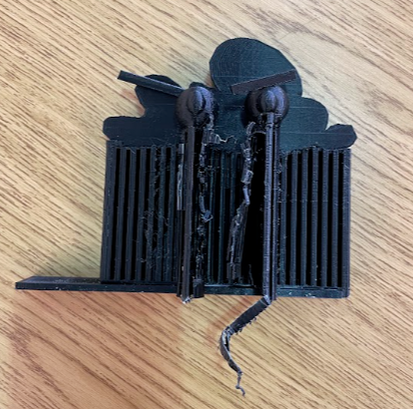
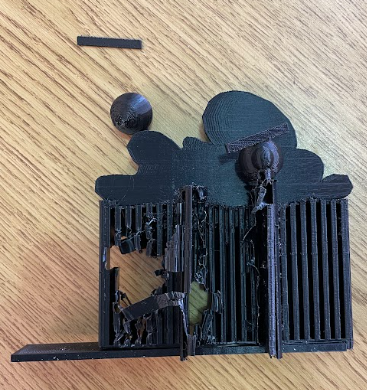
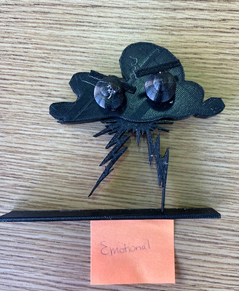


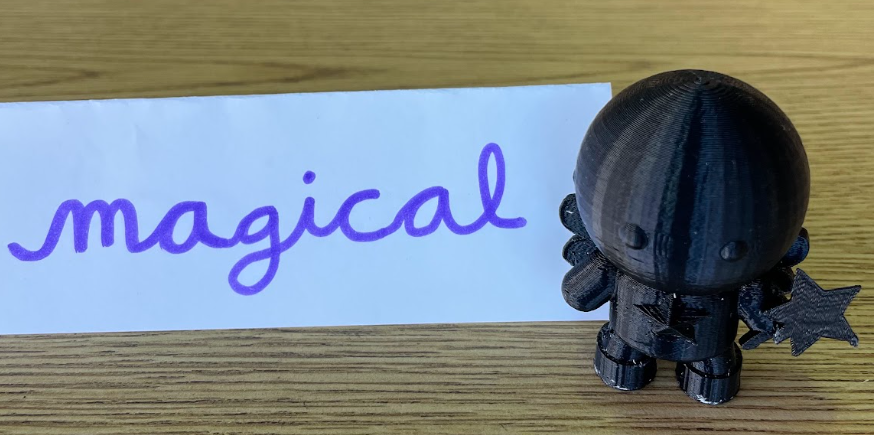

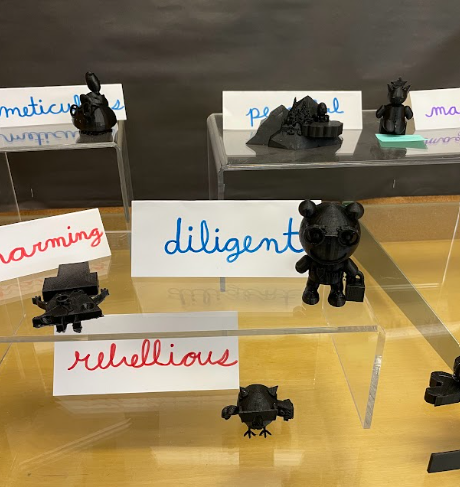




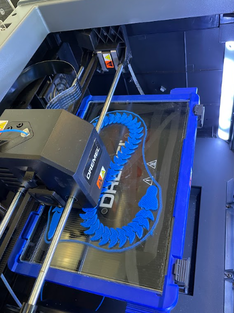
 RSS Feed
RSS Feed
